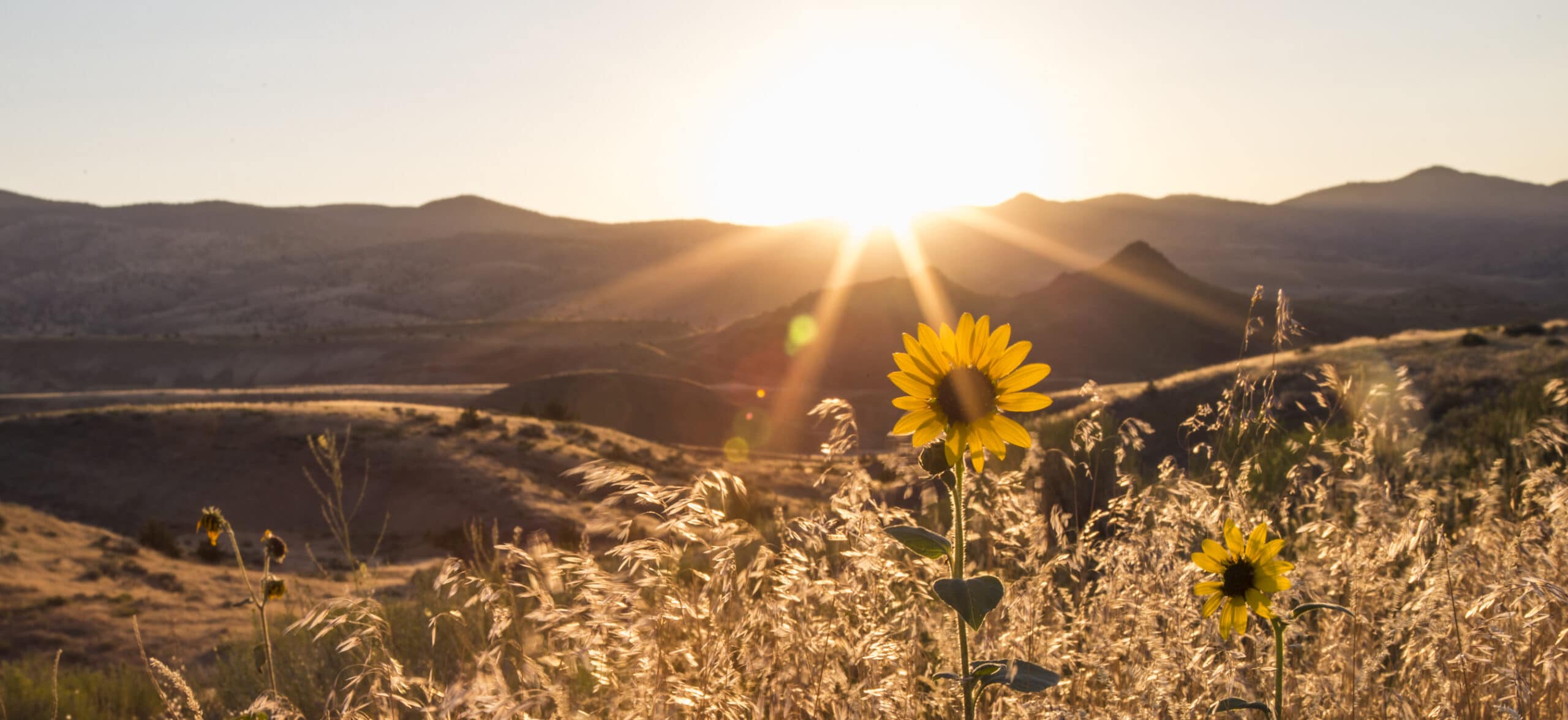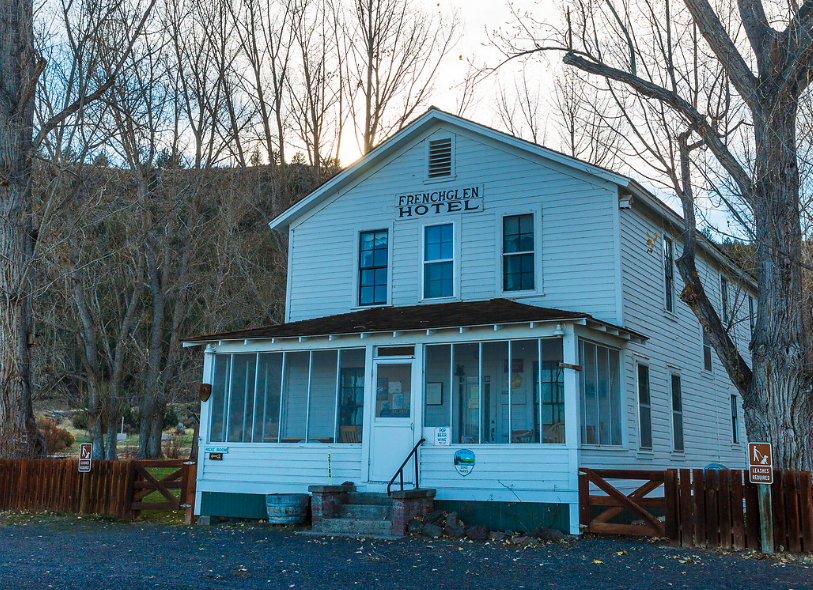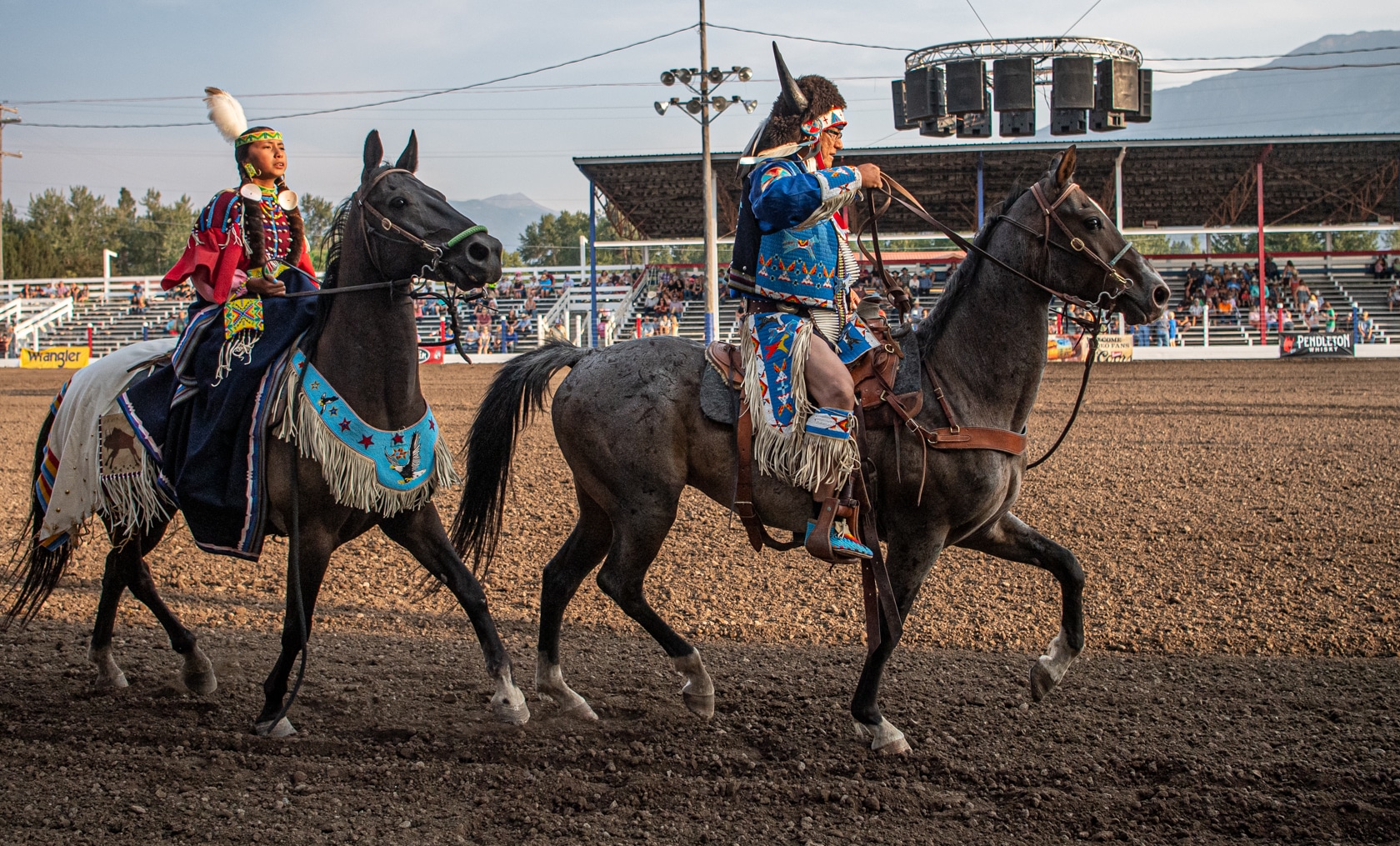Collage of Cultures in Southeastern Oregon
Travelers looking for a remote adventure dotted with immersive and informative experiences need just head to southeastern Oregon. From the awe-inducing spectacle of deep glacier-carved gorges of the Steens Mountain Region to the winding waters of the Owyhee River canyon, the landscape and solitude of southeastern Oregon have changed little over the last millennia. In contrast, the Indigenous peoples, immigrants, and visitors have left indelible impressions on the land, and helped shape rich and culturally diverse communities. From the famous Pete French Round Barn to the lesser-known Aspen Arborglyph trees, follow along as we tour the region, where a melting pot of cultural influences is celebrated in artifacts, points of interest, and artistic expression.
MALHEUR COUNTY
Ontario
Considered a gateway to epic mountain ranges, picturesque desert landscapes, and deep river canyons, Ontario is located at the easternmost border of the state. So far east, in fact, that it’s part of a small sliver of Oregon that is actually in the Mountain Time Zone. Ontario offers a unique collection of qualities and characteristics to visitors who may seek a sense of place in their travels. For centuries, the four rivers – the Snake, Malheur, Owyhee, and Payette – have sustained life in the area. Named after these waterways, the Four Rivers Cultural Center represents the constant flow of the area’s varying cultural influences — American Indian, Basque, European, Hispanic, and Japanese. The annual America’s Global Village Festival takes place here each June and celebrates the collage of cultures in the town and worldwide with food, arts and crafts, cultural demonstrations, and kids’ activities. Home to the Ontario Depot, an Edwardian-style train depot built in 1907 and on the National Register of Historic Places, visitors can view the building as they explore the town and all it has to offer.
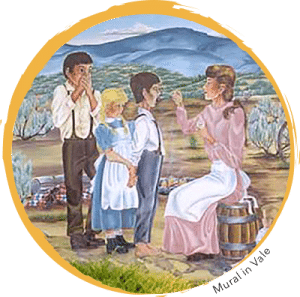
Vale
Located along the Malheur River, Vale was the first stop in Oregon for many settlers who braved the Oregon Trail. Nowadays, the town’s deep history provides plenty to explore. For history buffs, the Rinehart Stone House Museum served as a stopping place for Trail goers long ago and now serves to celebrate and memorialize the town’s history. For a dose of artistic inspiration, take a self-guided tour around town to see the artistry of Vale’s 30 painted murals depicting the town’s history on the Oregon Trail. The murals are found painted on the walls of buildings throughout town and in an outdoor gallery just outside the city limits. Due south, visitors can walk in the footsteps of settlers and pioneers at Keeney Pass, an interpretive site and a 2/3-mile round-trip hike along a section of the original Oregon Trail, where wagon ruts are still visible.
Stay: After a day of exploring, travelers will find Owyhee River Ranch, just outside of town, for an overnight stay in a bunkroom or yurt, or RV. Located in Eastern Oregon’s high desert, where cattle roam free, night skies are star-filled, and peace and quiet are the norm, Owyhee River Ranch offers guests miles of trout-filled riverfront nestled among breathtaking canyonlands.
Jordan Valley
Native American inhabitants of the area hunted, gathered, and fished the shores of the wild and scenic Owyhee River for thousands of years. Eventually, the Jordan Valley was settled by Basque gold rush prospectors, followed by Basque sheepherders and cattlemen. The Basque influence in Jordan Valley is so significant that the area is known as the “Home of the Basques.” Nowadays, road trippers and nature lovers enjoy the same scenic canyons and rugged rock formations around the valley. While in Jordan Valley, be sure to make a stop at the I.O.N Heritage Museum to view cultural, historical, and geological displays of Jordan Valley and surrounding areas. Take a drive by the ‘Pelota Fronton,’ a Basque Handball Court built by sheepherders in 1915. This landmark, at the heart of the city, stands to symbolize the cultural traditions and influences of Basque immigrants.
Danner
Located between the communities of Jordan Valley and Rome, the ghost town of Danner holds history and tales that date back to the Lewis and Clark Expedition. Here, intrepid explorers will also find the gravesite and monument of Jean Baptiste Charbonneau, son of Sacagawea.
Rome
A short journey from Danner is the community of Rome, whose name is symbolic of the nearby formations of fossil-bearing clay that look like Roman ruins. The 100-foot high formations, also known as the “Pillars of Rome,” span almost five miles long and two miles wide. These geological wonders served as a landmark to pioneers traveling the Oregon Trail.
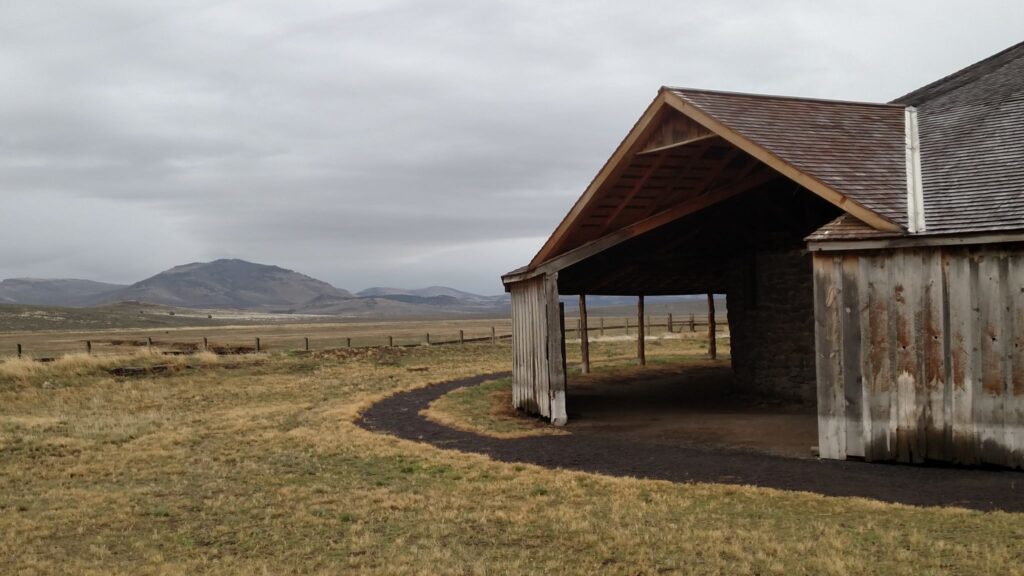
Pete French Round Barn State Historic Site
HARNEY COUNTY
Diamond
Diamond (pop. 82) is a little gem in Southeast Oregon. This ranching town sits at the foot of Steens Mountain and south of the 23-square-mile lava field of the Diamond Craters. Outdoor enthusiasts can explore the rich landscape of the Malheur National Wildlife Refuge for the Sandhill Crane migration or watch wild mustangs gallop across Kiger Gorge while also taking a tour through time. Pete French Round Barn State Historic Site, near the Malheur National Wildlife Refuge, is a network of wetlands that attract diverse bird and wildlife species. The unique barn stands in the heart of Harney County and remains a monument to the livestock empire. Beginning in 1872, Peter French began acquiring land and cattle and, within a decade, grew the enterprise to 70,000 acres and 45,000 head of cattle.
Stay: The Steens Mountain Guest Ranch is located at the base of the breathtaking Steens Mountains. It offers the experience of living like a real cowboy on an Oregon dude ranch, including horseback riding, viewing wild Kiger Mustangs, and herding cattle.
Burns
Located in the expansive high desert of Southeast Oregon, Burns offers outdoor activities, a deep history, and a friendly local vibe. Native to the area are the Burns Paiute Native Americans, who descended from the Wadatika Paiute band that once hunted and gathered across the region and have persevered to protect and maintain their native culture. Paiute legends teach that the Paiutes inhabited this land even before the Cascade Mountains formed. The tribe continues to hunt, gather food, and practice beadwork and drum-making in traditional ways.The Burns Paiute Powwow and Lacrosse Tournament takes place every August. Native American art, jewelry, and gifts are available at the Oard’s Museum & Gallery. The art of several Oregon Tribes is represented at the gallery, including the local Paiute tribe. In operation for 135 years and spanning three generations, the family-run free museum includes collections of Native American artifacts, dishes, furnishings, clocks, dolls, and more from owner Mavis’ great-grandparents, who settled in the area in 1872.
Visitors can get to know the area with maps and guides they pick up at the Harney County Chamber of Commerce, then head up the street to the Harney County Historical Society and Museum to learn more about the area’s rich history and heritage.
Stay: Crystal Crane Hot Springs is located just outside of Burns, in the heart of Harney County. Visitors can soak in the shared hot springs, relax in private soaking tubs, and choose from a variety of overnight accommodations.
Stay: Travelers can stay in the heart of downtown Burns at the Historic Central Hotel, whose prohibition-themed rooms offer guests an immersive glimpse into days past.
Frenchglen
No cultural scavenger hunt to Southeast Oregon is complete without a trip to the tiny town of Frenchglen. Boasting stunning scenery, wildlife, and history, along the edge of Steens Mountain and just steps from the Malheur National Wildlife Refuge, visitors can retrace century-old paths of stagecoach travelers. To begin, Riddle Brothers Ranch is a historical landmark for the history of pioneer settlement and livestock industry in the American West. Walter, Frederick, and Benjamin Riddle were three bachelor brothers who migrated from western Oregon, settled here, and built the ranch in the early 1900s. A little off the beaten path near Fish Lake Recreation Site in the Steens Mountain Wilderness are the Aspen Arborglyph Trees. The carvings on the trees in this aspen grove are called “arborglyphs.” Most of the arborglyphs here were carved by Basque sheepherders who worked the top of the Steens Mountain in the early-to-middle 20th century. These historic carvings were etched into the bark to make notes about the sheep, to leave drawings, or as a means of letting one another know who had passed by each place.
Stay: Rest overnight at the Historic Frenchglen Hotel State Heritage Site. Enjoy a relaxing evening sitting on the front porch viewing the scenic Steens Mountains or take a stroll on the Malheur National Wildlife Refuge nature trail, a short distance from the Hotel.
Taking the extra time to explore the culture, heritage, and history of the region’s people – past and present – makes way for appreciation and awareness of the land and the people who inhabit it. The stories and connections waiting to be found in the communities of Southeast Oregon are as expansive and endless as the sweeping views and vast landscapes.

